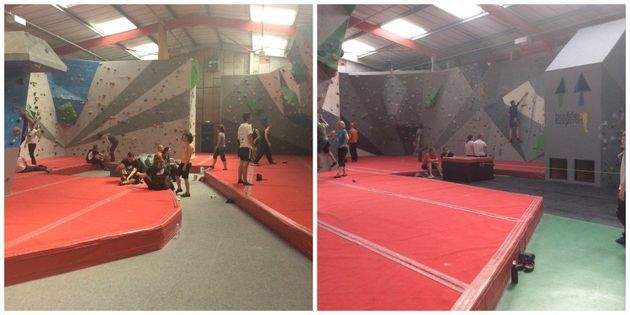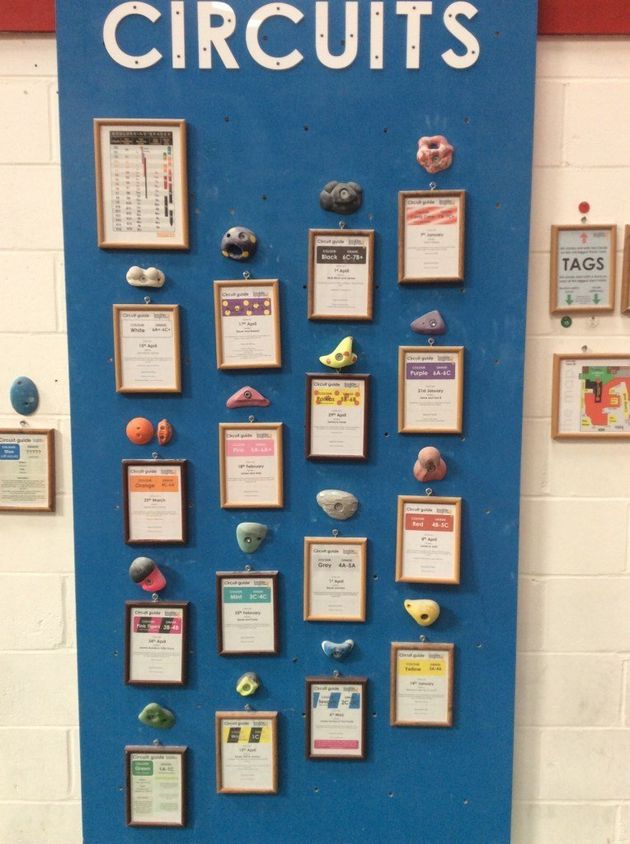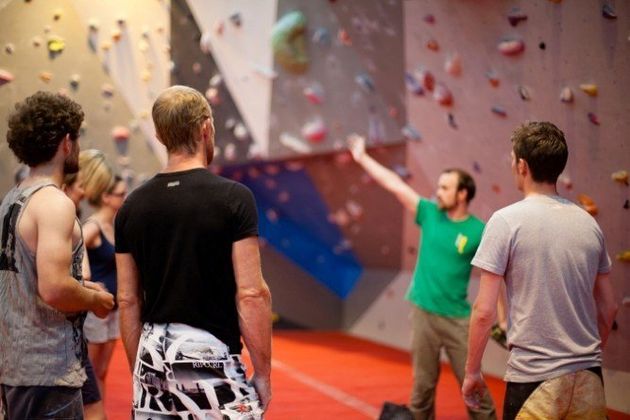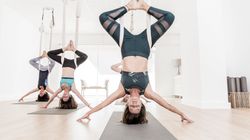“So bouldering is like rock climbing but without any ropes or harnesses?” I ask the instructor, as he talks us through the basics. “I guess you could say it’s like that,” he laughs in response. It puts me slightly on edge, but soon his good-natured banter would be putting me at ease.
I’m at my first ever bouldering session in Brighton. The last time I was climbing up a wall (albeit with a harness on) was during a residential trip 15 years ago. Now, I’m no way near as fearless as I was when I was 13.
Jokes aside, bouldering is rock climbing stripped down to its essentials. Leaving behind the harnesses, the activity challenges you to climb short but tricky bouldering “problems” (a route, or sequence of moves) using balance, technique, strength, and, of course, your brain.

It’s a Saturday afternoon when I arrive at the centre and the place is bustling with bouldering experts, speeding up the walls like Spiderman. I’m in a group of eight people at one of the centre’s adult training sessions – an introductory hour called “Get Bouldering”, which teaches beginners the basics of the activity.
They start us small and I’m feeling pretty smug about how easy I’m finding it. The instructor gets us to climb sideways across one of the smaller walls to get used to balancing on the holds, the term used for the coloured grips stuck to the climbing wall. We’re also introduced to the logic behind bouldering: all the different coloured holds on the wall actually mean something. One ‘route’ up the wall involves using one colour or pattern, and different colours and patterns signal different levels of difficulty.

The instructor demonstrates a “route” for us, using a specific set of coloured holds and we’re given the opportunity to try it out ourselves.
Bouldering is very much about teamwork – so we go off in pairs to try our first climb, with one of us spotting and the other climbing. It’s a very social activity. Not only can you chat while you climb, you almost need to. If you’re halfway up, your friend on the ground has a much better view of the wall than you do, so they can give you ideas of where to go next and give you encouragement if you’re feeling a little nervous.
I have a few goes on the green route and, seeing as it’s the most simple of routes on the wall, it’s not too taxing. My arms start to ache quickly, and the instructor tells me that I should be pushing from my feet rather than pulling from my hands.
After a while, the instructor stops us for another demonstration of a slightly tricker route and then we’re off again. I’m pleased that the majority of our one-hour session involves climbing, rather than just waiting around and listening.
We head off in pairs again and the instructor comes round to give us tips as we tackle the wall. “What happens if you move yourself slightly to the left and try that green hold by your hand?” he shouts up to me when I feel like I’m stuck and can’t get down. You have to use your brain, as much as your body, to succeed at bouldering, which takes a bit of getting used to.

Ten minutes later I head to the bigger wall and impress myself by going up higher (still on the easy colour). But as I get near the top I panic and freeze, not knowing how to carry on, yet slightly too afraid to clamber down. But the instructor soon manages to make me feel calm. “You’re fine,” he shouts up. “You can do this. Reach up to the left, you don’t need to come back down. Relax your body.”
I wasn’t made to feel silly for panicking and I was reassured I had nothing to worry about. After all, the wall is surrounded by crash mats, so if I fell it would be like falling on a big trampoline. When I reach the top and get down to the bottom again, the instructor tells me it’s a daily occurrence that people get panicky near the top – and completely normal for your first time.
Once the height issue has become less daunting, I realise how much I enjoy the problem-solving aspect of bouldering. Working out the next best option for where to place my hands or feet is crucial if I want to climb all the way to the top. The next day my arms ache massively and I can tell I had worked out muscles that haven’t been used in a long time.
The introduction session costs £20 and we could spend as long as we wanted climbing afterwards. After that, it’s £11.50 at peak times and £8 at off-peak times. It’s something I’d need to attend more regularly to try to completely overcome my fear of heights, but I’m definitely up for the challenge.


